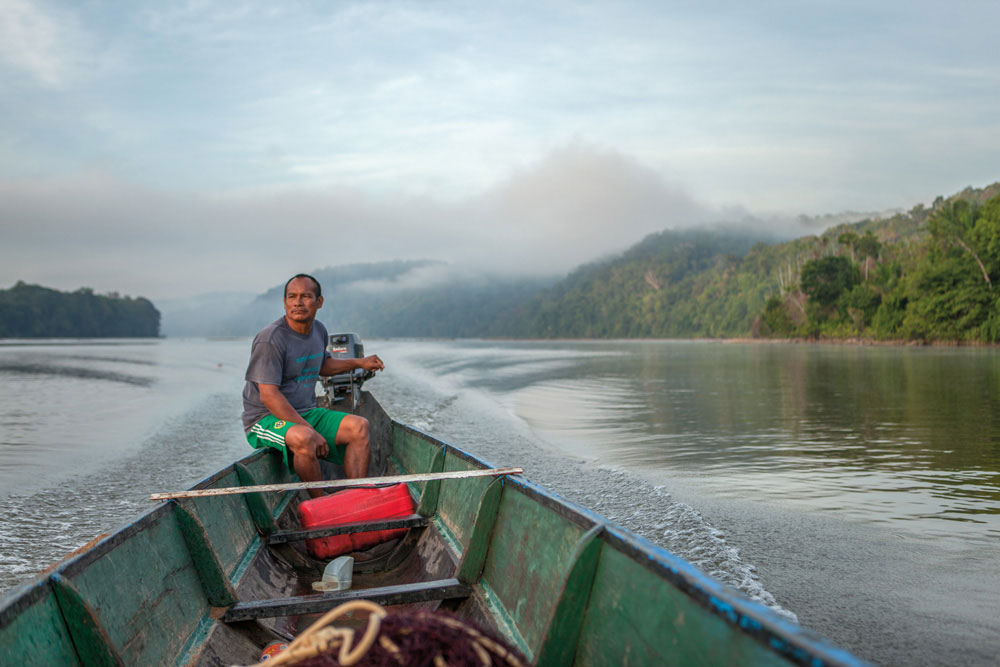Surinamese-American cinematographer Milton Kam has worked on numerous international films throughout his career, including projects for Netflix, Amazon, the History Channel, and National Geographic. But after living away from his homeland for more than twenty years, he felt stirred to explore Suriname’s diverse society through photography — starting with it’s indigenous peoples, who make up approximately four per cent of the country’s population. Like many Caribbean people, Kam learned about “Arawaks and Caribs” in primary school, but during his photographic mission — which took him deep into Suriname’s interior regions — he came to know the several distinct indigenous peoples who have called this land home long before there was a nation named Suriname. With his photographs newly published in the book Points of Recognition: Suriname’s Indigenous Peoples in the 21st Century, Kam talks to Shelly-Ann Inniss about the evolution of the project and what he learned along the way.
How did your career in film get started?
As a child in Suriname, I always loved watching movies. Back then, it never occurred to me that movies were crafted by a group of people. My interest in filmmaking as a career began when I saw a documentary about the making of my favourite adolescent movie, Star Wars. I was fascinated by the complex filmmaking process, in which many people with different specialisations work together to tell a story.
When I left Suriname to go to college in New York, I decided to major in both fine arts and filmmaking, ultimately hoping to get into special effects. During my film education, I discovered cinematography, which essentially is the art and craft of telling a story with images and movement. It brought together my interests in fine arts, adventure, and storytelling.
Have you worked on any films in Suriname or the wider Caribbean?
My career in cinematography has taken me to many places, where I shot a range of projects from documentaries to TV series. I have not worked in the wider Caribbean, but I have worked in Suriname on a few commercials, documentaries, and narrative films.
As a cinematographer, why did you choose to create a photo book?
I have always been interested in how accomplished photographers and photojournalists manage to encapsulate a story and a world in just one or two images. I also felt that a photo book allows the viewer to take in the images at his or her own pace. The content of a photograph can be studied more actively and thoroughly, and a photo book can literally be touched and smelled, which makes the experience all the more intimate.
Do you consider yourself an unofficial cultural ambassador?
During a period of six years, I had the opportunity to observe the indigenous peoples of Suriname in various contexts, from traditional ways of life in the rainforest to more urban conditions in and near Suriname’s capital, Paramaribo. I consider myself a witness, and share what I have seen, heard, and learned. I don’t particularly see myself as a cultural ambassador, because I don’t feel the need to speak for the indigenous peoples. They are very capable of speaking for themselves about their challenges and their dreams, and they do this more eloquently than I ever could. I see myself more as a friend, who uses his photographic skills to contribute to expanding public awareness of the beauty and dignity of Suriname’s indigenous peoples.
Which community resonated with you the most?
I honestly can’t say that one community stood out above all others, as my interactions with each village offered me different experiences. While I was in the village of Kwamalasamutu, I was often not aware of the tribal background of the person I was interacting with. Although most of its inhabitants are Trio, there are also members of eleven or twelve other tribes present there. If I were to single out one village which resonated with me the most, it would be Sipaliwini Savanne, a small Trio village near the southern border with Brazil. There I felt at the top of my craft as a photographer. I abandoned my routine of checking off a list of things to see, and adopted a mode in which I let myself be led by serendipity — the unexpected.
Do you speak any indigenous languages?
I learned a few basic expressions, such as good morning, how are you?, thank you, but most of my communication with the indigenous communities was in Sranan, the lingua franca of Suriname, or Dutch, the official language of the country.
What advice would you give to anyone who wants to visit these communities?
There are opportunities to visit some of the indigenous villages as part of a guided tour. There are now several guides and tour companies which are run by indigenous peoples themselves, which I highly recommend.
The most important advice I can give to a visitor is to treat everyone in these communities with respect, not to rush to judgements based on presumptions, and to help the local economy by purchasing souvenirs from the villagers themselves, instead of the hotel shops in the city.
How has this project affected you?
My experience has filled me with a deep appreciation for the indigenous way of life and what it can teach me as a city-dweller. Indigenous people have a relationship with their environment that has sustained them throughout the ages. By being the stewards of the rainforest, they are in fact the custodians of the health of our planet. People like myself owe them our respect and support as they struggle with economic, social, and political challenges. I truly believe that the health of the indigenous peoples and their position in society will reflect the health of the world’s future as a whole.
Each year, Suriname celebrates Indigenous Peoples Day on 9 August. To learn more about Milton Kam’s Points of Recognition, published by Kapelka Books, visit pointsofrecognition.com


























